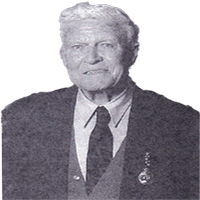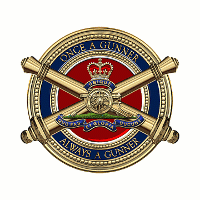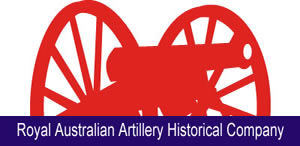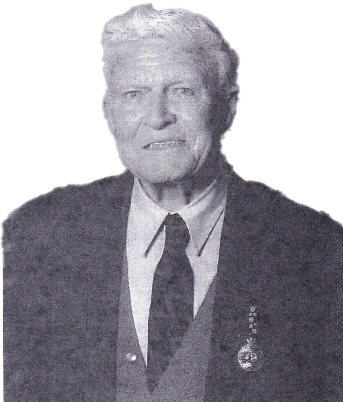 |
Arthur Ronald Kennedy was born in Botany, NSW on 27 December 1916 and grew up in the Western Suburbs of Sydney attending school at Auburn and Granville Tech. His early life experienced the throes of the Great Depression, during which he gained work as a tea sampler with Griffiths Brothers. He enlisted in the Permanent Force Artillery on 24 May 1938 at Georges Heights and was allotted to 2 Anti-Aircraft Cadre of P Anti-Aircraft Battery, 1 Heavy Brigade stationed at North Head Barracks. Arthur was trained on the 3-inch 20 cwt anti-aircraft gun and this equipment was to hold a special place in Arthur’s heart.
On 25 August 1939 his unit was placed on standby for movement to Darwin to man the anti-aircraft defences. They arrived two days later, exactly one week before war was officially declared. Half of his unit, including Arthur, flew to Darwin on the Empire Flying Boat Cooee. His unit was the first in the Australian Army to be flown to its station of mobilization. Arthur described Darwin as ‘a bit of a rough and ready place’. Eventually his unit took over the two guns at Elliot Point. These guns had a dual role of anti-aircraft and anti-motor torpedo boat (MTB) defence.
In 1941 his unit was absorbed into 14 Anti-Aircraft Battery. They were all placed on high alert when Japan entered the war. On the morning of 19 February 1942, they ‘stood to’ as normal for dawn manning’ Nothing happened, and they returned to normal routine. Then at 10 o’clock the Japanese attacked Darwin, bombing the aerodrome and shipping in the harbour. Arthur was in action. About an hour later a second raid occurred. Arthur said, ‘everyone was rather jittery, and the majority of troops were moved back to the Adelaide River area’. This left the anti-aircraft and coastal gunners as the front line of defence. ‘We were issued with two months’ worth of rations, in case the Japanese invaded and we were cut off. You can imagine the effect on the younger members of the unit’. |
The four mobile 3-inch guns were moved down to Batchelor Airfield and in June the two static 3-inch guns at Elliot Point were placed on carriages and, with Arthur, moved to Batchelor as well, joining 22nd Heavy Anti-Aircraft Battery. In June 1942, Permanent Force members could join the AIF and Arthur became NX124727. In August 1942, members who had been in the Darwin area for more than two years returned home for long leave. Arthur returned for his first leave in three years by train and truck to Sydney. Following leave, he was posted to a unit manning 3-inch guns protecting Bankstown airfield.
Arthur remained in the Army following the war and on 22 January 1953 eventually took discharge as a warrant officer. He became a mushroom farmer for eight years and later a purchasing officer. In 1981 he finally retired, or so he thought. At about the same time the Royal Australian Artillery Historical Society was formed, and Arthur joined and took up a position on its board. The commitment was to go unbroken. His last visit to the Museum came just one week before his passing.
His commitment to the Museum could never be doubted. Whenever something had to be done, Arthur would be there. When the Society need a Secretary, up stood Mr Secretary Arthur Kennedy. When the Society needed a Treasurer, sure enough there was Arthur. He contributed right across the whole spectrum of Museum activities and his knowledge of anti-aircraft artillery ensured that ‘black art’ of gunnery was never neglected.
He was particularly interested in his 3-inch 20 cwt gun. Initially there was only one gun, and then a carriage was found, well it was only proper that the original manufacturers be involved in restoring it and Arthur ensured this occurred. Arthur insisted that it would not be complete until it had its sights. When they were finally found he ensured that they would be fitted. The Armco team were coerced into helping under Arthur’s supervision. When completed and placed on display, the pride of the occasion could be easily seen in Arthurs’s expanded chest. Whenever the Museum had to be represented, Arthur was always available. Several trips eventuated with the Curator, Steve Crawford, including the Centenary of Army in 2001 in Canberra, where Arthur himself became a centre of attraction. He was much sought after by the younger soldiers to listen to his story. There was another occasion of a visit to the Museum by Mike Whitney to film the site for the Sydney Weekender program. During the tour, Mike was much taken by Arthur but especially from an incident in the tunnels. With the cameras off, Mike commented that it must have been very noisy down there when the guns fired to which Arthur replied ‘What?’ Mike was so taken it was cameras on and let’s do it again.
For his service to the Museum, Arthur was awarded the Medal in the Order of Australia in 2005. Arthur’s pride in receiving this recognition of his work was evident for all to see. There was one matter still outstanding – the publication of Arthur’ book on the history of Australian Anti-Aircraft Artillery. When finally completed it will add to the debt the Regiment owes to a very dedicated Gunner. Arthur was also involved with many other organisations besides North Fort. He was a churchwarden and active with the Hawkesbury and Hills District Historical Societies. He was involved in the Defence of Darwin Celebrations in 2002 and the Manly Arts Gallery to name but another two.
Arthur married first Cecily and had two children who survived him. His second marriage was to Jean. His passing on 2 August 2008 has been a sad loss, not only to his family but also to the Gunner community as a whole and to the RAA Museum in particular. Arthur’s funeral was held at Balgowlah Anglican Church on 6 August 2008.
|








